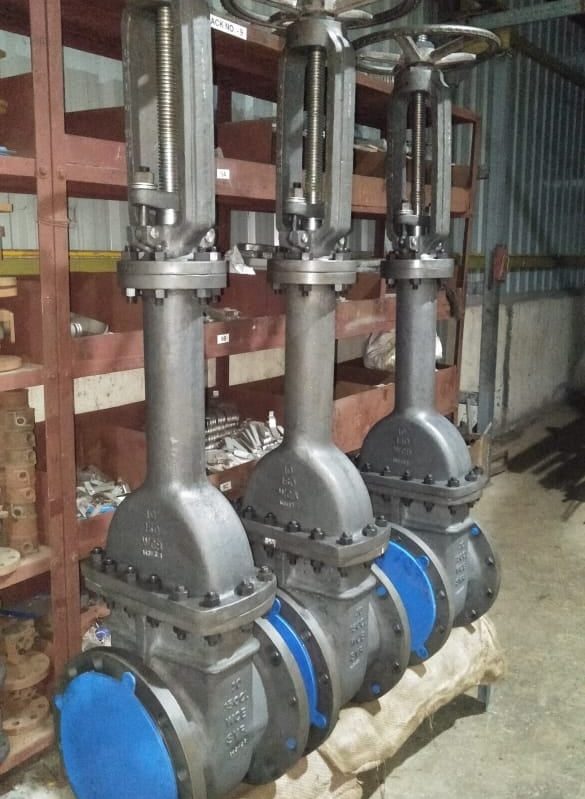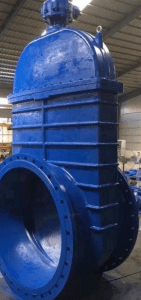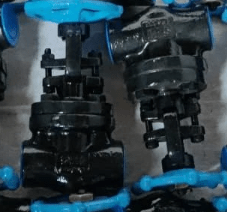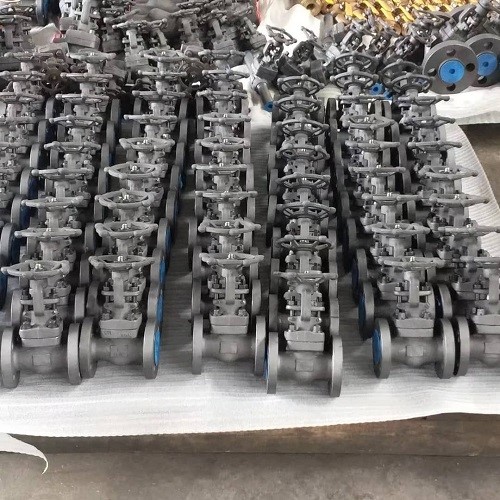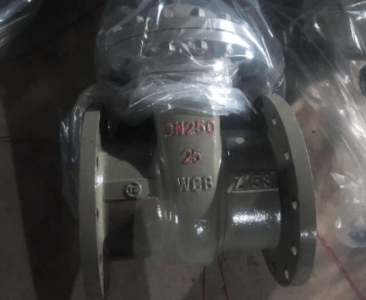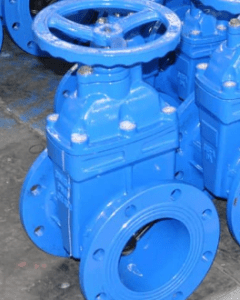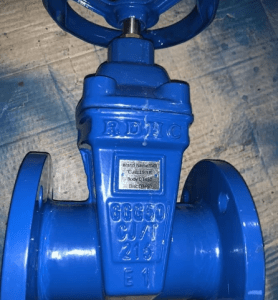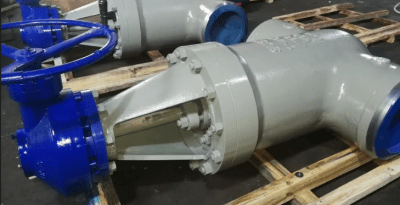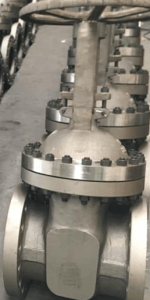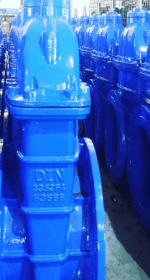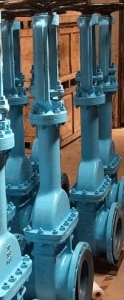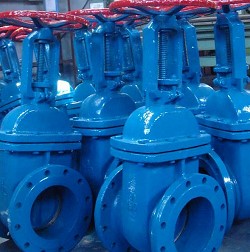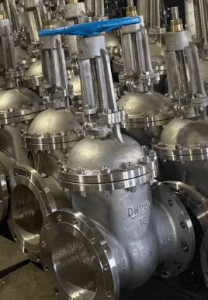UAE Valves is one of the best Gate valve supplier in Dubai. A gate is a type of valve that is used to separate sections of a water supply. It functions as a gate, as the name implies, that blocks the flow and reopens it when necessary.
Gate valves function by raising or lowering a gate or wedge into the liquid’s channel, opening or closing it.
Working: gate valves operate on a fairly simple concept. The gate disc is raised while the valve is in the open position, enabling fluid to flow through the valve body in a straight path. A seal is formed between the disc and the valve seat as the disc is lowered, limiting the fluid’s flow. The gate disc is raised or lowered using an actuator or handwheel that operates this on/off mechanism.
Function: the gate valve is designed for media isolation rather than flow control. To operate a gate valve, turn a handle or knob attached to the stem, which moves up and down as it spins. This stem includes a disc or gate that opens and closes by moving along internal guides in the valve body. This gate can be parallel or wedge-shaped, depending on the type of gate valve, allowing more effective flow control.
Advantages:
1)Their capacity to withstand high temperatures and pressures makes them useful in a variety of systems and industries.
2)Because of their streamline shape, gate valves offer minimum pressure drops, which lowers the energy required to maintain flow rate.
3)Furthermore, gate valves offer strong sealing, guaranteeing that no gas or liquid can escape. By doing this, harm and contamination to the system and its parts are avoided.
4)Most gate valves are designed to be bi-directional.
5)They require minimal maintenance and are capable of being used at high pressure and temperatures.
Industries:
1)Pipeline systems : such as gas and oil pipelines, to regulate the flow of the item being transported and to offer a backup stop.
2)Tank farms : to isolate various system components. Additionally, they control pressure and keep tanks from over pressurizing.
Chemical processing facilities : to separate and regulate the flow of extremely 3)corrosive materials. These valves are constructed from materials that are intended to survive such severe circumstances.
Types:
1)Rising stem gate valve
2)Non rising stem gate valve
3)Forged steel gate valve
4)Double disc gate valve
5)Pressure seal gate valve
Every part of a gate valve is responsible for proper functioning. Let’s discuss the parts of the gate valves that make up its structure:
1)Gate: The gate works by ensuring high-end sealing for leaks. Gates are mostly either wedge or similar types. These gates provide enough space for liquid to flow. When they are closed by turning the wheel, they block liquid. Different structures of gates have different applications.
2)Stem: Stem plays a central role in the gate valve operation. It contains a threaded system. We lower the gate valve with the help of raising the stem. A stem can be either rising or non-rising. Rising stems are good for manual handling. The non-rising stem is suitable for underground appliances.
3)Bonnets: Bonnets in a gate valve are responsible for protection against leaks.
4)Seat : Another vital part of gate valves. Seat rings allow better ventilation in hot conditions. Most of the seats on wedge-style gate valves are made of metal. Furthermore, there are resilient seats, which are ideal for tight closures.
Description:
Available materials: SS304, SS904, SS904L, SS316, Aluminium Bronze, Monel, Bronze, Brass, Duplex steel, Inconel, Incoloy, Titanium, WCB, CF8, CF8M, CF3, CF3M, WC1, WC6, WC9, Cast iron, super duplex
Size: 1/2″- 64”
Class: 150 to 2500
Nominal Pressure: PN10 to PN450
Operations: Hand Wheel, Gear operated, Electric actuated and Pneumatic Actuated
Ends: Flanged(FF,RF,RTJ), Buttweld, Socket weld, Threaded
Showing all 13 results



